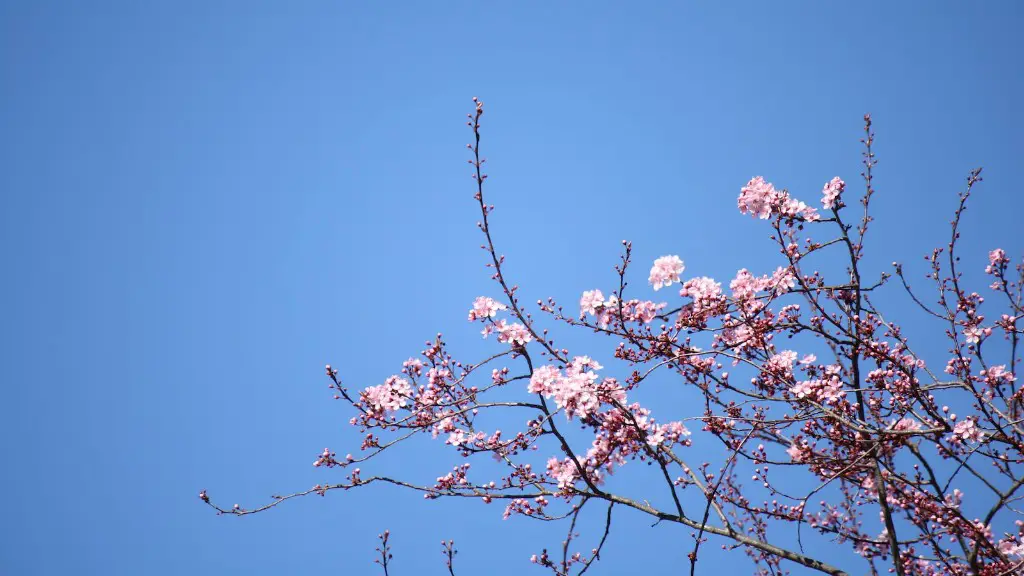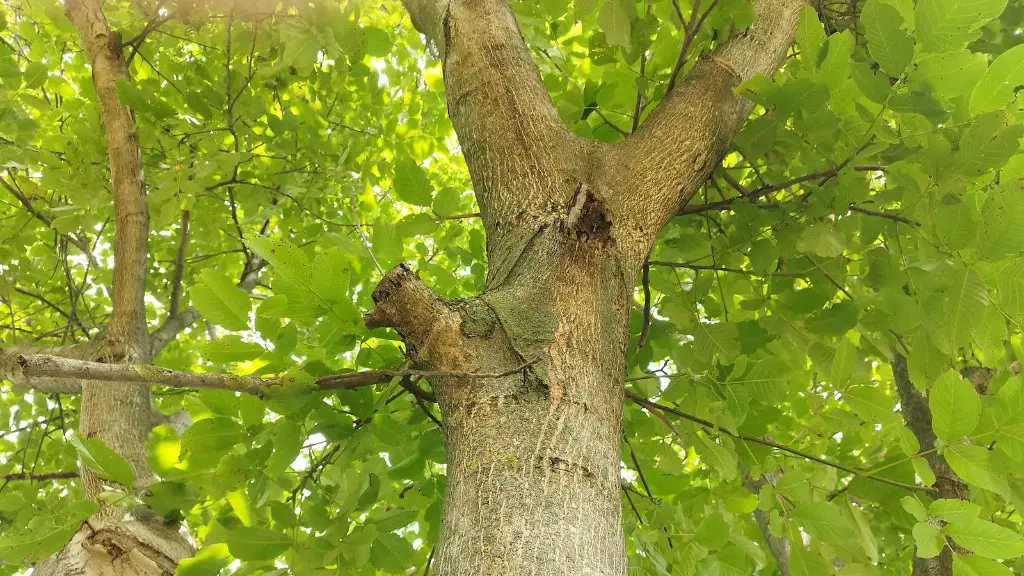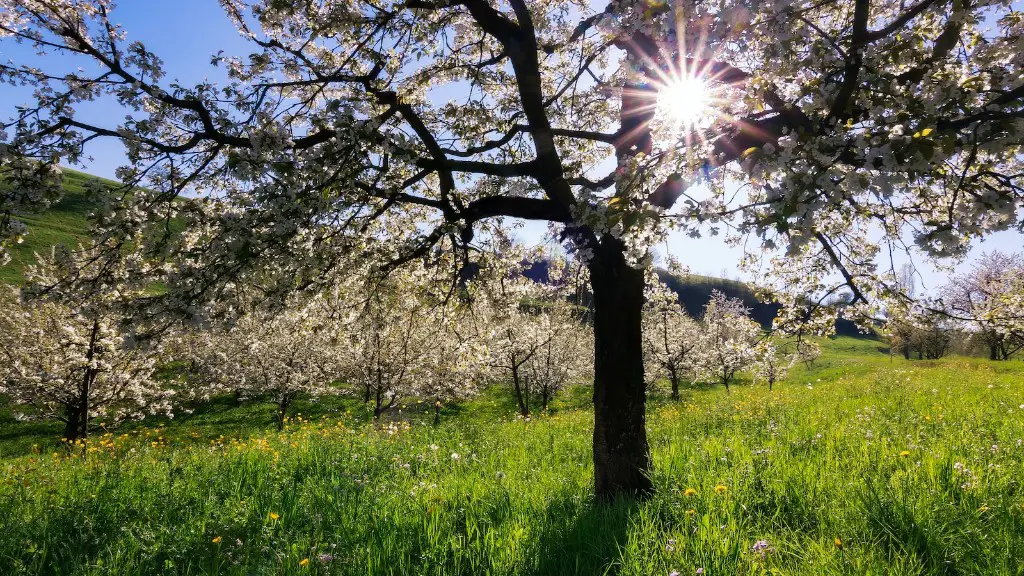What is Cherry Tree Canker?
Cherry tree canker is a fungal disease which causes sunken lesions on the bark of the tree. The fungus, Botryosphaeria, grows and reproduces rapidly, causing damage to the bark and restricting the flow of nutrients and water up the trunk. This results in inadequate foliage growth and death of the tree over time.
Cherry tree canker is a common problem in areas with high humidity levels, poor air movement, and high levels of rainfall. High humidity creates the perfect conditions for Botryosphaeria growth and spread. The fungus enters the cherry tree through wounds and cracks in the bark when the tree is weak or stressed.
Signs of Cherry Tree Canker
The signs of cherry tree canker can include ooze oozing from the trunk or branches, dark spots, sunken bark lesions and dead twigs. The bark of the tree will often feel raised or cracked around the canker site, and the lesion may range in color from light gray to deep red.
Additionally, the leaves of the tree can begin to turn yellow and fall off early. This is due to the impaired flow of nutrients and water traveling up the trunk; the foliage is being deprived of the essential elements it needs for growth.
Prevention Strategies for Cherry Tree Canker
The key to preventing cherry tree canker is keeping the tree healthy. The tree should be nurtured and cared for with adequate amounts of mulch and water. Pruning ill-shaped branches can reduce stress and create good air movement. Additionally, well-dried firewood stored away from the tree will reduce the spread of spores.
Treatment Options for Cherry Tree Canker
The first step in treating is to rid the tree of the disease. This can be done by cutting back affected branches or applying a fungicide to the trunk. To be effective, fungicides need to be applied regularly, usually once a month. Additionally, pruning should be enhanced to remove dead wood and wood that shows signs of the fungus.
It is important to remember that fungicides are not a cure-all and will only work as long as they are used regularly. If the fungus is allowed to enter the tree, or if the tree is not properly treated, the disease can spread quickly and cause irreparable damage to the tree.
Environmental Factors that Exacerbate Cherry Tree Canker
Environmental factors such as wet soil and heavy rains can increase the occurrence of cherry tree canker. It is important to always monitor the soil and water conditions around the tree. If heavy rains and/or wet soil are present, then fungicides should be applied promptly.
Expert Advice for Cherry Tree Canker Treatment
In order to adequately treat cherry tree canker, expert advice should be sought. Tree service professionals can inspect the tree for signs of the disease, inspect the soil and water conditions to determine if the tree is impacted, and provide advice on the best course of action.
In cases of severe cherry tree canker, it may be necessary to remove the tree or remove the affected branches of the tree immediately to prevent further spread. If the tree passes a professional inspection and is in good enough condition, fungal treatment options may be available.
Regular Tree Maintenance for Cherry Tree Canker Prevention
Regular tree maintenance is essential for long-term cherry tree canker prevention. Soil and water conditions should be monitored and mulched regularly around the tree. Additionally, prune and trim any dead or damaged branches, and use firewood that is completely dry and stored away from the tree.
Consult with a Professional Tree Specialist
Cherry tree canker is a serious issue and requires professional care to treat and prevent. A professional tree specialist will be able to inspect the tree and provide detailed advice on the best course of action. They can also recommend recommended treatment options and provide advice on how to keep the tree healthy in the long term.
Fungicide Application for Treating Cherry Tree Canker
Fungicides are an effective tool for treating cherry tree canker, but it is important to understand the proper application and dosage. Fungicides can be applied to the trunk and branches of the tree and should be reapplied every month for best results.
When applying fungicides, it is important to protect the beneficial insects in the tree. Always follow the application directions to ensure proper safety and efficacy of the fungicide.
Know When to Remove the Tree
In the most serious cases, it may be necessary to remove the entire tree or portion of it. If the tree has lost more than 50% of its branches, is showing serious signs of disease, or if the trunk has been significantly impacted, then the tree may need to be removed.
Ultimately, the decision should be made with the advice of a professional tree specialist. They can provide insight into the severity of the tree’s condition and recommend the best course of action.
Monitor the Soil and Water Conditions
In order to reduce the risk of cherry tree canker, it is important to monitor the soil and water conditions around the tree. If the soil is too wet or if heavy rains have occurred, then fungicideapplication should take place. Additionally, ensure that the tree is receiving adequate watering and mulch.
Conclusion
Cherry tree canker is a common problem in areas with high humidity and rainfall. Signs of the disease can include oozing, dark spots, sunken bark lesions and dead twigs. Fortunately, the disease can be treated and prevented with proper maintenance and treatment. The key is to monitor the soil and water conditions and apply fungicides regularly. If the tree shows signs of severe damage or if the trunk has been impacted, then the tree may need to be removed. Ultimately, it is important to consult with a professional tree specialist to determine the best course of action.



